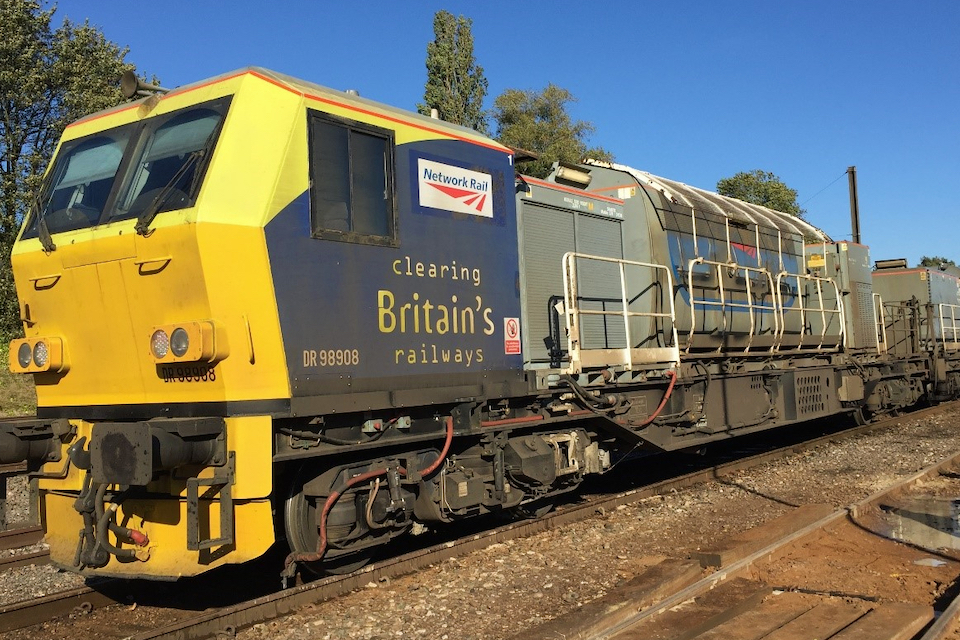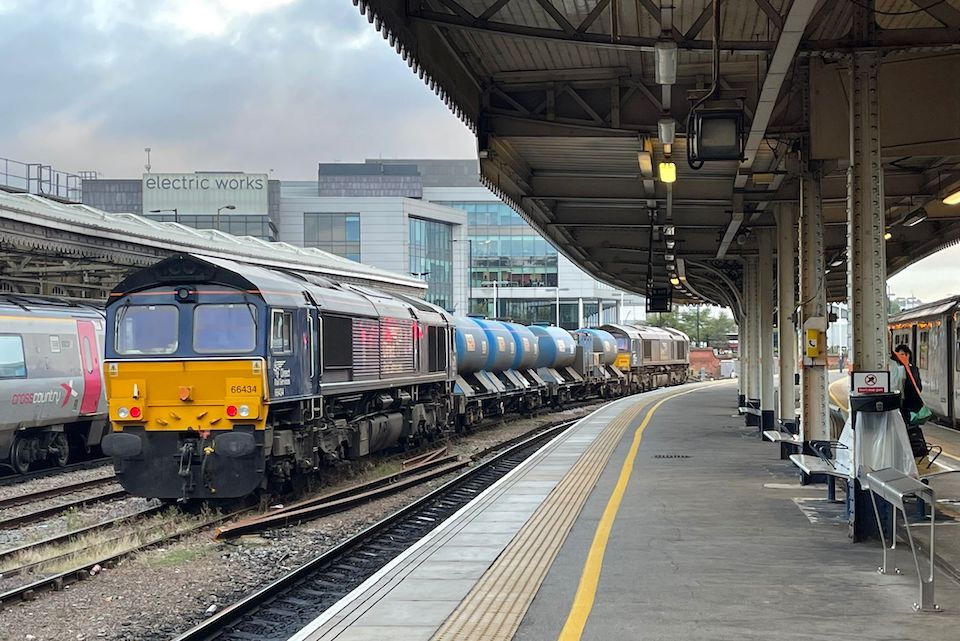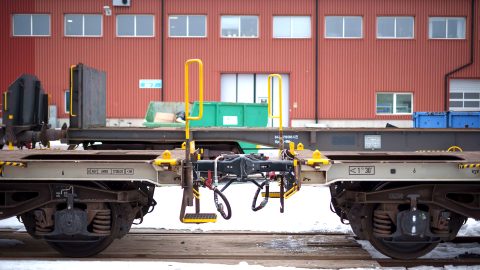Leaf busting trains now out 24 hours a day on UK rail routes

It is that time of year again. A special fleet of ‘leaf-busting’ trains have started blasting leaves off the line to help keep passengers and freight moving across the UK rails this autumn. The operations are managed by Network Rail, the national infrastructure agency, and contracted out to rail freight operators all over the country.
From 1 October until 13 December, specialist trains wash leaf debris from track across the UK. In the midlands of England alone, almost 92,000 miles of track (nearly 160,000 kilometres) of rail will be treated, with trains operating from a seasonal delivery depot at Kings Norton. The centre includes responsibility for the West Coast Main Line to Euston and Chiltern Main Line to Marylebone in London.
Water jets and glue
Three multi-purpose vehicle trains are currently operating from the Kings Norton depot, with another rail head treatment train (RHTT) operating from the town of Banbury. It is a similar story around the rest of the country, with the leaf clearing operation swinging into action from Thurso to Penzance and all points in-between.

After railway lines have been cleared with high pressure water jets the machines then apply rails with a glue-like coating to help train wheels grip the tracks. Regarded as the railway’s equivalent of “black ice” on the roads, leaves on the line can create issues when they stick to damp rails and are compressed by moving trains into a thin, black layer which can affect train braking and acceleration.
This year is harder than ever
The build-up of leaf mulch can also make it harder for signallers to detect a train’s location, causing delays.
“Leaves on the line are a big problem for the railway”, said Martin Colmey, operations director for Network Rail’s Central Route. “It disrupts services every year. Network Rail and train operators work together to battle against the elements to get freight and passengers to their destinations.”
This year is proving harder than ever and the reason is, surprisingly, the pandemic. “Even more work has gone into getting prepared for autumn this year because of the challenges posed by the coronavirus pandemic, including how we operate the trains themselves”, added Colmey. “We are ready to keep people and goods moving across the West Midlands and Chiltern Main line running a safe and reliable service for our customers.”
Traction gel applicators
Last year Network Rail spent 2.9 million pounds (3.2 million euros) on the southern parts of the Central and West Coast routes during its autumn efforts to keep passengers moving. NR says that, this year, 107 traction gel applicators have been positioned across the Central route. They spray a special sand-like gel onto the rails to help provide extra grip for train wheels.

Specialist teams will be positioned across the West Midlands and Chiltern main line to check that the autumn treatment programme is working effectively and provide additional support where necessary. When it comes to clearing the lines, no leaf is left unturned.
You just read one of our premium articles free of charge
Want full access? Take advantage of our exclusive offer





